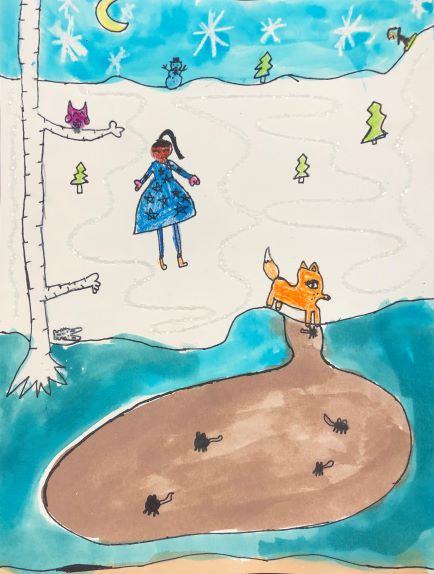
Explore the amazing worlds Over and Under the Snow. Students create magical scenes of animals in winter. This project covers Common Core Standards for Language Arts and Science for grades 1-4 which can be found at the end of the lesson.
Grade Level
1st, 2nd, 3rd, and 4th. This project was created by 1st grade students.
Objective for Over and Under the Snow
Students will explore the areas over and under the snow. Students create magical scenes of animals in winter.
Time
2 – 30 min lessons
Materials
- Black Sharpie Marker – Sharpie Permanent Marker, Fine Point, Black, Pack of 5
- 9×12 Watercolor paper – Canson (100510941) XL Series Watercolor Pad, 9″ x 12″, Fold-Over Cover, 30 Sheets
- Brushes – Acrylic Paint Brush Set, 1 Packs / 10 pcs Nylon Hair Brushes for All Purpose Oil Watercolor Painting Artist Professional Kits
- Liquid Water Colors – Sargent Art 22-6010 10-Count 8-Ounce Watercolor Magic Set
- Or this mini version for homeschooling – Sargent Art 22-6210 10-Count 4-Ounce Watercolor Magic
- Kleenex for blotting paint
- Crayons or oil pastels
- Optional: Liquid glue and glitter for the snow
Inspiration/Artist
I was inspired to make this Over and Under the Snow project when I saw this post on Deep Space Sparkle: Click Here
Instruction with Questions
Day 1
Ask students what they know about where animals live in the winter. Maybe they are familiar with snowy areas or maybe they have some informed ideas. I love gathering what they know before starting any lesson.
Discuss some vocabulary that may connect with other things they are learning. For instance, depending on the age group, they may need to check their understanding on the word “hibernate”. You may also want to introduce them to the variety of zones underground.
Read the book “Over and Under the Snow Paperback – Picture Book” by Kate Messner. Here is the overview from Amazon: Over the snow, the world is hushed and white. But under the snow lies a secret world of squirrels and snow hares, bears and bullfrogs, and many other animals making their winter home under the snow. This beloved nonfiction picture book exploring the subnivean zone reveals the tunnels and caves formed beneath the snow but over the ground, where many kinds of animals live through the winter, safe and warm, awake and busy, but hidden beneath the snow.
After reading the story, have students recall some of the things they learned and some of the animals that were introduced.
Other resources I recommend:
I highly recommend using this very inexpensive resource on Teachers Pay Teachers, “Hibernation Activity – Text Over and Under the Snow by Kate Messner”. This gives the students something to reference and draw from. I love that she includes some images of the animals featured in the story.
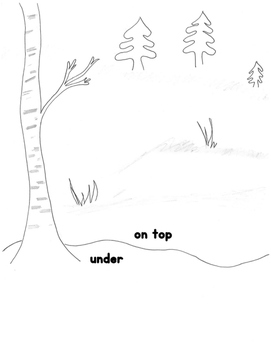
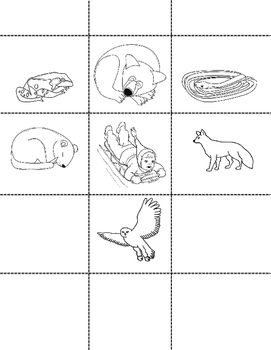
A new tool being used lately is QR coding. This teacher on Teachers Pay Teachers has a free resource for you. Over and Under the Snow QR Code Task Cards and Activities
First
Have students use the QR codes activity.
Or
Give them a copy of the Teachers Pay Teachers handout. Have them point to the area that is above ground and the area that is under the ground. Ask them to recall some animals that lived in each area and simply draw them or write their names on the board. Using this template, students create a rough draft of their drawing, placing the appropriate animals over and under the snow.
Second
Perhaps on a separate day, give students a blank piece of paper. If they will be using watercolor, they should use watercolor paper. If you are teaching virtually, they can draw their picture on any blank paper. Have them refer to their rough draft for making their final image. Have them note some things before drawing.
- Where is the tree? Is it taller than the page? Where does the trunk end? Why? What color is your tree? Is it a White Birch or Redwood?
- Whooooo might live in the tree? (see what I did there?)
- Who might live in the snow above the ground?
- Which animals hibernate in each of the two zones just below the ground? Show them how to make another line for the zone to create two areas.
- What colors do you think they should consider when painting their picture? The snow is white…so no color should be used. The area in the first zone just below the snow can be a blue green color. It is very cold but snuggly for hibernating animals. The area on the very bottom can be brown.
Have them draw their scene in pencil and then go over the lines with sharpie. Use crayons or oil pastels to color in the animals and trees. If possible, add watercolor to the sky and two underground worlds. If you are using liquid watercolor, mix some colors to create earthy looks.
For added pizazz add a stream of liquid glue and glitter on your snow.
Check out these finished Over and Under the Snow art pieces!
Common Core Standards for Over and Under the Snow
Grades 1-4 – Language Arts
Children’s adventure stories, folktales, legends, fables, fantasy, realistic fiction, and myth. Includes staged dialogue and brief familiar scenes. Also included are nursery rhymes and the sub-genres of the narrative poem, limerick, and free verse poem Includes biographies and autobiographies
Grade 1 – Science
Life Sciences
2. Plants and animals meet their needs in different ways.
a. Students know different plants and animals inhabit different kinds of environments and have external features that help them thrive in different kinds of places.
c. Students know animals eat plants or other animals for food and may also use plants or even other animals for shelter and nesting.
Investigation and Experimentation
Scientific progress is made by asking meaningful questions and conducting careful investigations.
a. Draw pictures that portray some features of the thing being described.
b. Record observations and data with pictures, numbers, or written statements.
d. Describe the relative position of objects by using two references (e.g., above and next to, below and left of).
Grade 2 – Science
Physical Sciences
- The motion of objects can be observed and measured.
a. Students know the position of an object can be described by locating it in relation to another object or to the background.
Grade 3 – Science
Life Sciences
3. Adaptations in physical structure or behavior may improve an organism’s chance for survival.
a. Students know plants and animals have structures that serve different functions in growth, survival, and reproduction.
b. Students know examples of diverse life forms in different environments, such as oceans, deserts, tundra, forests, grasslands, and wetlands.
c. Students know living things cause changes in the environment in which they live: some of these changes are detrimental to the organism or other organisms, and some are beneficial.
d. Students know when the environment changes, some plants and animals survive and reproduce; others die or move to new locations.
Grade 4 – Science
Lie Sciences
3. Living organisms depend on one another and on their environment for survival.
a. Students know ecosystems can be characterized by their living and nonliving components.
b. Students know that in any particular environment, some kinds of plants and animals survive well, some survive less well, and some cannot survive at all.
c. Students know many plants depend on animals for pollination and seed dispersal, and animals depend on plants for food and shelter.

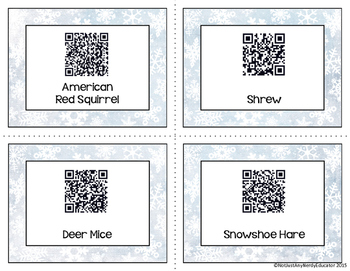
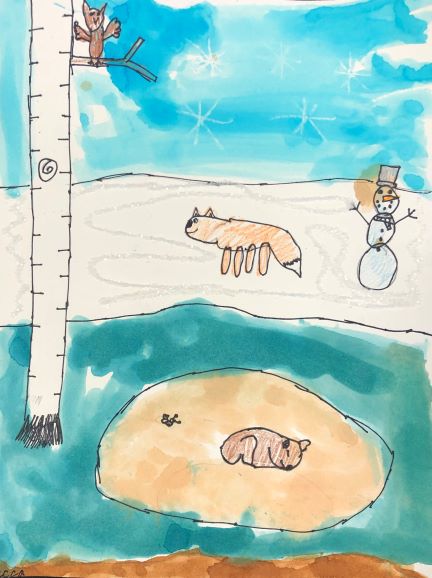

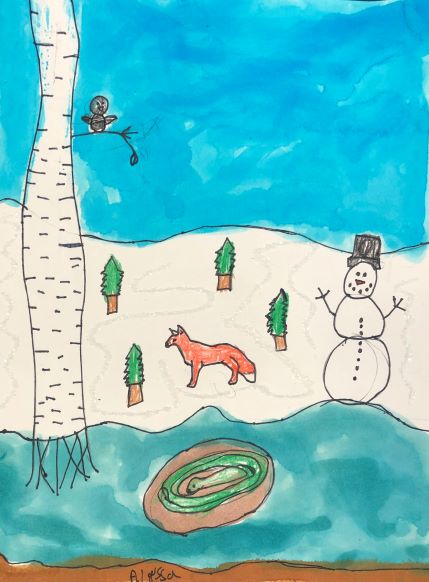



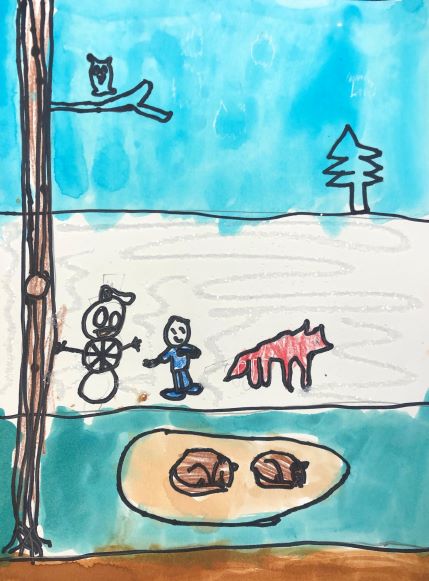

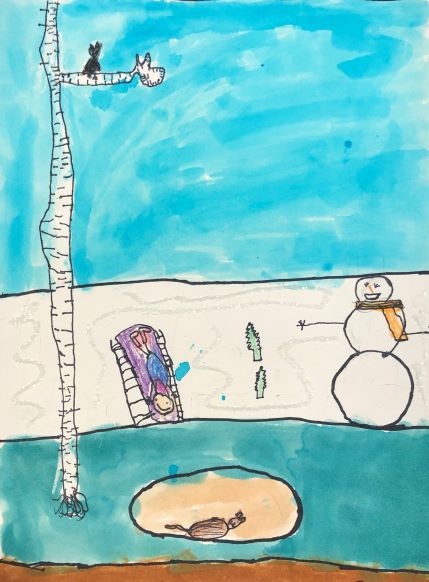


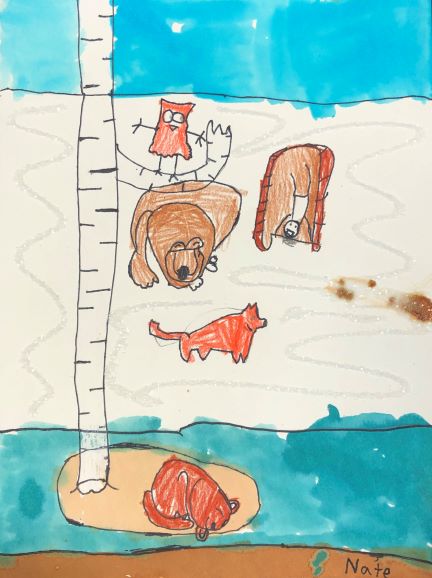


[…] Learn more: Leah Newton Art […]